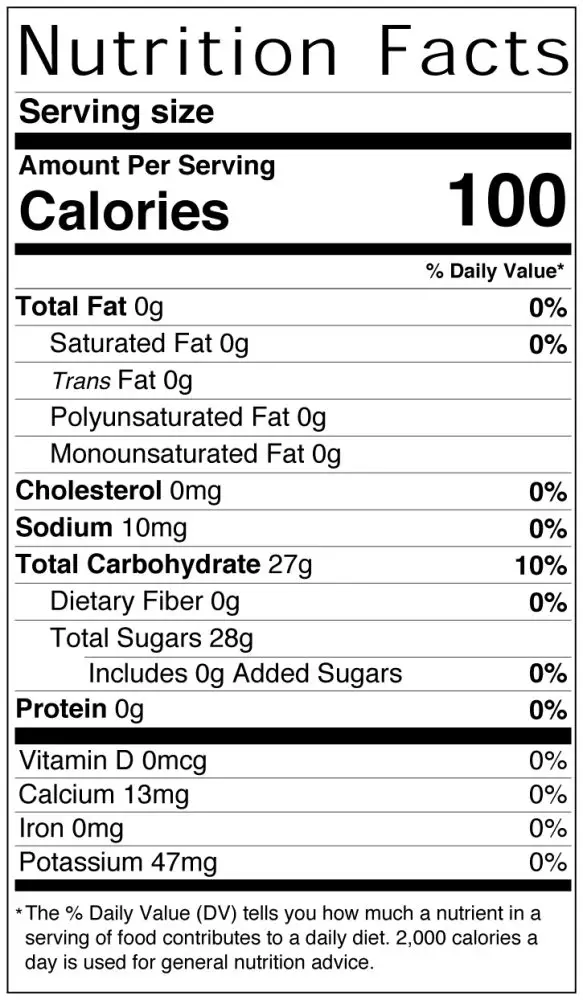Almond Breeze Nutrition Label
Almond Breeze Nutrition Label: Everything You Need to Know
Are you a health-conscious individual who is always on the lookout for nutritious and delicious alternatives to dairy milk? If so, then you’ve probably come across Almond Breeze, one of the leading brands of almond milk in the market. But before you start incorporating this plant-based beverage into your diet, it’s important to understand its nutrition label and what it entails.
What does the Almond Breeze nutrition label tell us?
The Almond Breeze nutrition label provides valuable information about the macronutrients, micronutrients, and other components present in the almond milk. By reading and understanding the label, you can make informed choices about whether or not this product aligns with your dietary goals and needs.

1. Serving Size and Servings Per Container
The nutrition label starts with the serving size, which tells you the amount of almond milk considered as one serving. For Almond Breeze, the standard serving size is 1 cup (240 ml). The label also specifies how many servings are in each container, helping you determine how much you’re consuming in one sitting.
2. Calories
One of the most important pieces of information on the nutrition label is the calorie content. Almond Breeze almond milk typically contains around 40-80 calories per serving, depending on the specific variety and whether it is sweetened or unsweetened. This calorie range makes it a relatively low-calorie option compared to whole milk, which contains around 150 calories per 1 cup serving.
3. Macronutrients: Fat, Carbohydrates, and Protein
The nutrition label also provides information about the macronutrient content of the almond milk. Almond Breeze is low in fat, with most varieties containing around 2.5 grams of fat per serving. The fat in almond milk is primarily heart-healthy monounsaturated fat, which has been linked to various health benefits.
In terms of carbohydrates, almond milk contains fewer carbs than regular milk. It typically contains around 2-7 grams of carbohydrates per serving, with the exact amount depending on whether it is sweetened or unsweetened. The sugar content of sweetened almond milk is usually around 6-7 grams per serving.
When it comes to protein, almond milk generally has a lower protein content compared to dairy milk. A standard serving of Almond Breeze contains only 1 gram of protein. If you’re looking for a significant source of protein, you may need to consider other options.
4. Micronutrients: Vitamins and Minerals
While almond milk may not offer the same level of nutrients as cow’s milk, many brands, including Almond Breeze, fortify their products with essential vitamins and minerals. Some varieties of Almond Breeze may contain added calcium, vitamin D, vitamin E, and other nutrients to enhance its nutritional profile.
However, it’s important to note that the actual micronutrient content may vary depending on the specific product and brand. Checking the nutrition label can help you assess the nutrient content and determine if it meets your dietary requirements.
5. Allergen Information
If you have specific dietary restrictions or allergies, the allergen information on the nutrition label will be crucial. Almond Breeze almond milk is made from almonds, making it a suitable dairy alternative for those who are lactose intolerant or allergic to dairy. However, individuals with nut allergies should exercise caution and consult their healthcare providers before consuming almond milk.
Frequently Asked Questions
1. Is almond milk a healthy alternative?
Yes, almond milk can be a healthy alternative to cow’s milk, especially for individuals who are lactose intolerant, allergic to dairy, or following a plant-based diet. However, it’s important to consider your specific dietary needs and goals. While almond milk is generally lower in calories and fat than cow’s milk, it may not provide the same level of protein.
2. Is Almond Breeze almond milk suitable for vegans?
Yes, Almond Breeze almond milk is suitable for vegans as it is made entirely from plant-based ingredients. It does not contain any animal-derived products, making it a popular choice among individuals following a vegan lifestyle.
3. Can almond milk be used in cooking and baking?
Absolutely! Almond milk can be used as a substitute for dairy milk in various recipes, including smoothies, cereals, baked goods, sauces, and more. It adds a subtle nutty flavor and a creamy texture to your dishes. Just make sure to adjust the quantities accordingly, as almond milk may have a thinner consistency than cow’s milk.
4. Does almond milk contain any preservatives?
Some brands of almond milk may contain preservatives to prolong shelf life. However, Almond Breeze takes pride in providing a product that is free from artificial flavors, colors, and preservatives. The specific ingredients can be found on the nutrition label or the packaging.
Final Thoughts
Choosing the right dairy alternative can be an overwhelming task with the abundance of options available. Almond Breeze almond milk offers a nutritious and delicious option for those seeking a plant-based milk alternative. By understanding the Almond Breeze nutrition label, you can make an informed decision that aligns with your dietary goals, whether you’re looking to reduce your calorie intake, avoid dairy, or simply enjoy the taste of almonds.
Remember, nutrition labels are your best friend when it comes to making well-informed choices about the food and beverages you consume. So, take a few extra seconds to read the labels and be confident in the decisions you make for your health and wellness. Cheers to a delicious and nutritious journey with Almond Breeze!






